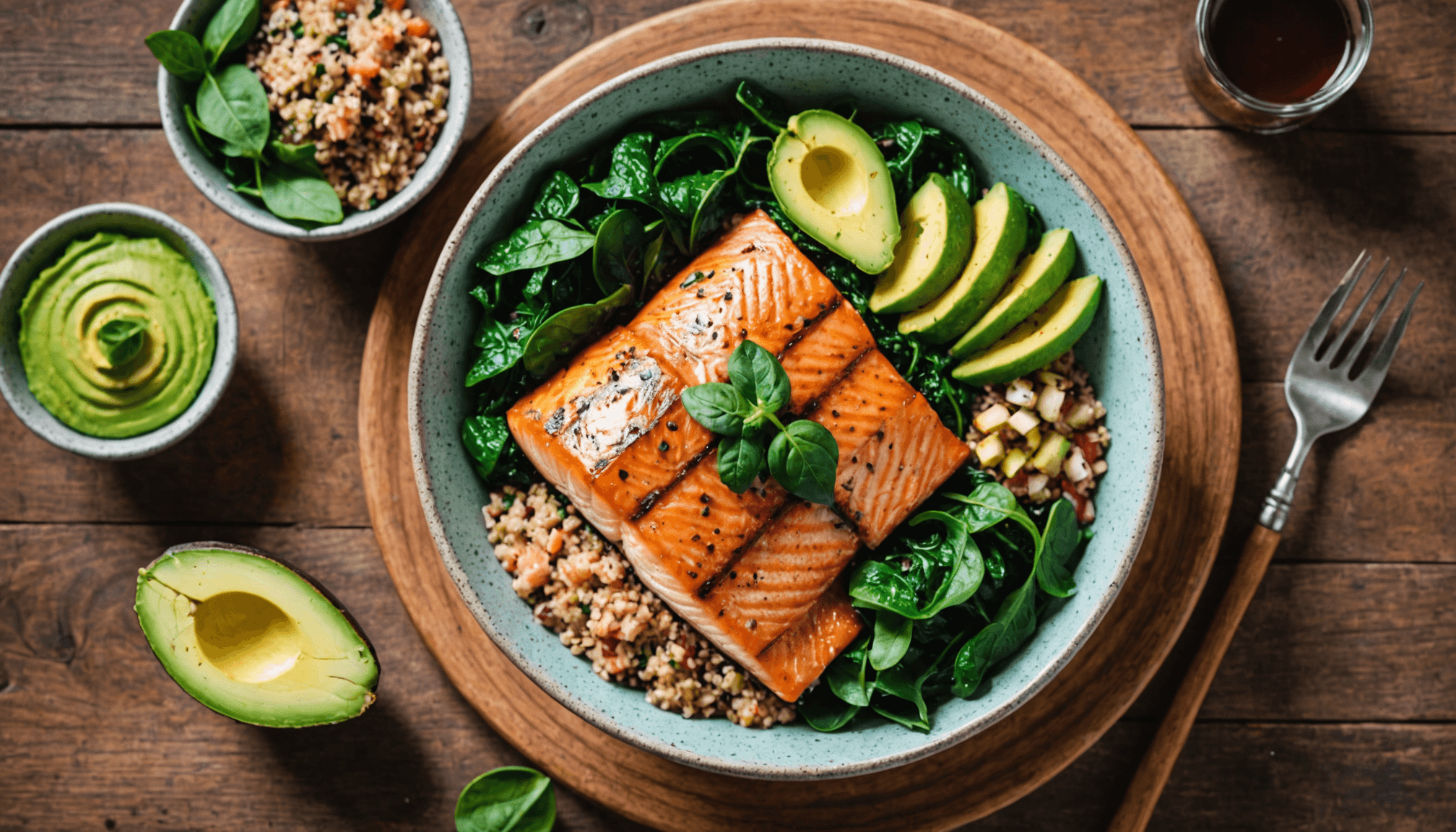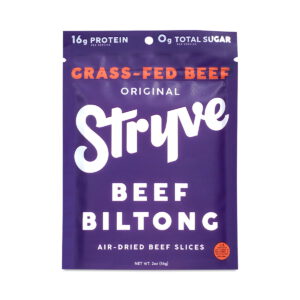- Healthy meal planning basics
- Choosing nutritious ingredients
- Creating a balanced menu
- Scheduling meal prep time
- Tips for efficient cooking
- Storing and reusing leftovers
When it comes to grocery shopping, whether you’re visiting your local market or navigating the world of online shopping, having a solid strategy can save you both time and money while ensuring that you fill your cart with nutrient-dense options. Begin by creating a comprehensive grocery list based on your meal planning for the week. This not only keeps you focused but helps curb impulsive purchases that often lead to unhealthy choices.
Staying organized is key. Group your shopping list by categories—produce, grains, proteins, and pantry items. This way, you won’t be meandering through the store, which can lead to distractions and unplanned items ending up in your basket.
When selecting ingredients for healthy meals, prioritize fresh, seasonal produce. Local farmers’ markets are fantastic places to find organic fruits and vegetables at competitive prices. These markets often offer unique items that you won’t find at grocery chains, making your meals feel special and adventurous. Plus, buying local supports your community and reduces the carbon footprint associated with transport.
For those with dietary preferences, whether you’re vegan or otherwise, focus on plant-based proteins like legumes, quinoa, and tempeh, which are often budget-friendly. Don’t overlook frozen fruits and vegetables either; they retain most of their nutrients and can be just as good as fresh when it comes to cooking.
Online shopping for groceries has its own set of advantages. If you choose to shop online, make sure to check the store’s reputation for freshness and safety. Look for reviews or ratings on different products and avoid anything that seems dodgy. Additionally, consider subscribing to a service that offers organic delivery—some even provide meal kits tailored to your dietary needs!
When checking products, especially packaged foods, pay attention to ingredient lists. Aim for items with fewer preservatives and additives. Opt for brands that emphasize natural ingredients and try to steer clear of foods that list sugar as one of the first three ingredients.
Finally, remember that shopping in bulk can save money in the long run. Invest in whole grains, nuts, and seeds that can be used across multiple meals throughout the week. Just be mindful of storage: these items should be kept in dry, cool places or refrigerated if necessary to prolong freshness.
By employing these time-saving tips and prioritizing nutritious ingredients, your grocery shopping experience can transition from a chore into an enjoyable part of your healthy meal planning journey!
Choosing nutritious ingredients
When it comes to sourcing nutritious ingredients, there are several key aspects to keep in mind to ensure your meal planning is effective and health-conscious. Selecting the right components for your dishes can significantly influence both the quality of your meals and your overall well-being.
Start by focusing on the whole foods. These are foods that are minimally processed and free from additives or preservatives. Incorporating a variety of whole foods into your grocery list not only enhances the nutritional profile of your meals but also fosters a more wholesome eating environment. Aim for a selection of colorful fruits and vegetables, whole grains, lean proteins, and healthy fats. Each color typically represents a different array of nutrients, so a diverse palette ensures you’re getting a range of vitamins and minerals.
Next, consider the nutritional value of grains and legumes. Whole grains, such as brown rice, quinoa, and farro, are rich in fiber and can aid in digestive health while providing a slower release of energy, keeping you satiated longer. On the other hand, legumes like lentils, chickpeas, and black beans are excellent sources of plant-based protein and are high in fiber, which supports heart health. A comparison of some common whole grains and their nutritional benefits can provide clarity:
| Grain | Calories (per cooked cup) | Protein (grams) | Fiber (grams) |
|---|---|---|---|
| Brown Rice | 218 | 5 | 3.5 |
| Quinoa | 222 | 8 | 5 |
| Farro | 220 | 7.5 | 6 |
| Lentils | 230 | 18 | 15.6 |
When choosing proteins, whether animal or plant-based, it’s crucial to pick options that are lean and minimally processed. For example, chicken breast, fish, and turkey are healthier choices compared to higher-fat options like sausages or fried meats. If you’re incorporating dairy, opt for low-fat or non-dairy alternatives enriched with calcium and vitamin D, such as almond or soy milk.
Additionally, you should be mindful of the fats in your meals. Healthy fats, found in foods like avocados, nuts, seeds, and olive oil, can support heart health and provide essential fatty acids that your body needs. Avoid trans fats and limit saturated fats commonly found in processed foods.
Finally, don’t forget about herbs and spices. Not only do they enhance flavor, but many herbs and spices also offer health benefits. Turmeric, for example, is known for its anti-inflammatory properties, while garlic can boost your immune system. These add-ins can enrich your meals without additional calories or unhealthy ingredients.
By emphasizing whole, nutrient-dense foods in your meal planning, you’ll not only elevate the taste of your dishes but also ensure that you and your family are consuming healthy meals packed with necessary vitamins and minerals, paving the way for better health and wellbeing.
Creating a balanced menu

Creating a balanced menu is pivotal for a successful week of healthy meal planning. Start by ensuring that your meals include a variety of food groups to achieve a well-rounded diet. Consider structuring your menu around a healthy plate model, which typically includes portions of vegetables, proteins, whole grains, and healthy fats. For instance, a delightful meal could be grilled salmon served alongside quinoa and sautéed spinach topped with slivers of avocado.
If you’re short on time, it’s a good idea to designate “theme nights” for your meals. For example, you could assign “Meatless Monday” featuring a hearty chickpea stew, “Taco Tuesday” with veggie tacos loaded with colorful toppings, or “Stir-Fry Wednesday” to incorporate seasonal vegetables and lean proteins. This strategy simplifies grocery shopping, as it lets you focus on specific ingredients for each night’s theme, reducing both cost and preparation time.
When planning your menu, don’t forget the importance of including nutrient-dense snacks. Healthy snacks can bridge the gap between meals, helping to maintain energy levels throughout the day. Stock your pantry with options like air-popped popcorn, hummus with veggie sticks, or a handful of mixed nuts. This not only keeps your hunger at bay but also ensures you’re reaching for healthy options rather than processed snacks.
If you’re catering to various dietary needs, think inclusively. Create versatile dishes that can be easily modified for different preferences, such as a grain bowl with a base of brown rice or quinoa, topped with roasted veggies, various proteins like grilled chicken or tofu, and a choice of dressing. This way, meal prep becomes efficient and progress is made toward building a more balanced menu without much hassle.
Additionally, planning for leftovers can be a valuable time-saving tip. Cook larger portions and set aside what you can repurpose in other meals. For example, a baked sweet potato can serve as a side one night and be transformed into a filling for a breakfast hash the next day. This not only reduces waste but maximizes flavor and nutrition throughout the week.
While scheduling your meals, pay attention to ingredient freshness. Seek out local farmers’ markets for seasonal produce, which not only tastes better but is often more nutrient-rich. Make a habit of checking the seasonal produce calendar to inspire your weekly theme nights and keep your menu exciting.
Lastly, remember that simplicity often leads to consistency. Aim for five to seven core meals that can be rotated throughout the week. This not only streamlines your grocery shopping—allowing you to buy in bulk for certain staples—but also encourages familiarity, making healthy meals an easy choice for the whole family.
Scheduling meal prep time
Scheduling your meal prep time effectively is essential to ensure that your week of healthy meals runs smoothly. Begin by selecting a specific day that works best for you, ideally when you have a few uninterrupted hours to devote to cooking. Many people find that Sundays are ideal, but pick a day that fits your schedule and lifestyle.
Once you’ve chosen your prep day, outline a timeline for the tasks you need to accomplish. Break down your meal prep into manageable segments; for example, you might focus on washing and chopping vegetables first before moving on to cooking grains and proteins. A visual aid like a checklist or a timeline can help keep you organized and on track.
Consider the various cooking methods that can save time. For instance, while one pot is simmering, you can prepare another item on the stove or in the oven. Utilizing your stovetop, microwave, and oven simultaneously can significantly speed up the process. If you have access to a slow cooker or an Instant Pot, these tools can be lifesavers as they allow you to set ingredients to cook while you attend to other tasks.
Another important aspect of scheduling your meal prep is coordinating storage. Having sufficient, appropriately sized containers on hand is vital. Glass containers are a popular choice as they can go from the fridge to the microwave with ease, plus they keep food fresh longer than plastic. Clearly label each container with the contents and date to avoid any confusion when it’s time to eat.
Additionally, factor in some time to clean up after your meal prep. Having a clean kitchen not only feels better but also sets you up for success when it’s time to cook during the week. A tidy workspace may even encourage you to stick to your healthy meal planning, as it feels less daunting.
Don’t underestimate the power of batch cooking. Prepare larger quantities of staples like quinoa, brown rice, or grilled chicken and store them in portioned containers. This way, you can easily mix and match different foods throughout the week to create diverse meals without the need to cook from scratch every day.
As you gain experience, you may find that certain dishes require similar ingredients or cooking times, allowing you to maximize your efforts even further. For example, if you plan to make a vegetable stir-fry and a soup one day, you can chop the same vegetables ahead of time, saving both effort and time.
The goal is to create a routine that allows you to efficiently prepare healthy meals without feeling overwhelmed. As you continue to refine your meal prep schedule, you’ll learn what works best for you, making it easier to enjoy nourishing meals throughout the week.
“The secret to success is to be ready when your opportunity comes.” – Benjamin Disraeli
Tips for efficient cooking
 When it comes to efficient cooking, the goal is to streamline your meal preparation process while maintaining the quality and nutritional value of your meals. One effective practice is to focus on mise en place, a French term that means “everything in its place.” Before you begin cooking, gather and prepare all your ingredients. Wash, chop, and measure out everything needed for your recipes. This not only saves time but also minimizes stress as you shift from one task to another. With everything organized and at hand, you can transition smoothly from step to step, reducing the temptation to get distracted or overwhelmed.
When it comes to efficient cooking, the goal is to streamline your meal preparation process while maintaining the quality and nutritional value of your meals. One effective practice is to focus on mise en place, a French term that means “everything in its place.” Before you begin cooking, gather and prepare all your ingredients. Wash, chop, and measure out everything needed for your recipes. This not only saves time but also minimizes stress as you shift from one task to another. With everything organized and at hand, you can transition smoothly from step to step, reducing the temptation to get distracted or overwhelmed.
Consider batch cooking items that can be used across multiple meals. By preparing grains, proteins, and vegetables in larger quantities, you ensure that meal assembly during the week is quick and easy. For example, roast a pan of seasonal vegetables or cook a big pot of quinoa or brown rice at once. These versatile staples can be mixed into stir-fries, salads, or served alongside your main dishes, reducing cooking time significantly.
Also, utilize kitchen technology smartly; for instance, your slow cooker, pressure cooker, or air fryer can help reduce time spent actively cooking. Set up your slow cooker in the morning with ingredients for a hearty stew or chili, and return home to a delicious, hot meal that’s ready to eat. Air fryers can crisp up vegetables or proteins in a fraction of the time traditional methods require. Moreover, prepare sauces and dressings in advance, storing them in airtight containers. These can elevate your meals while keeping them interesting and flavorful without any added time on your cooking days.
In addition, minimize cleanup by using the same utensils and pots for multiple tasks. For instance, you can use a sauté pan to cook both vegetables and proteins, provided you plan the order correctly. This approach not only reduces dishwashing time but also contributes to richer flavors as remnants of previous ingredients enhance the next dish.
Lastly, rotate your menus to avoid monotony, which can lead to cooking burnout. Keep a digital or physical record of your favorite recipes and swap them in and out of your meal plan. This way, you can maintain your enthusiasm around cooking while continually enjoying healthy meals.
- How can I make meal prep quicker?
- Meal prep can be made quicker by organizing all your ingredients first, using batch cooking techniques, and employing kitchen appliances effectively. Setting aside time to prep in bulk can significantly reduce the time needed during busy weeks.
- What are the best containers for meal prep?
- Glass containers are often recommended for meal prep as they preserve freshness and can easily transition from the fridge to the oven or microwave. Ensure containers are appropriately sized to suit portion control and minimize waste.
- How do I maintain variety in my meals?
- To maintain variety, rotate recipes weekly, experiment with different spices and seasonings, and use versatile ingredients that can be used in multiple dishes. A themed meal night can also help keep your menu fresh and exciting.
- What should I do with leftovers?
- Leftovers can be repurposed into new meals—think soups, stews, or salads. You can also freeze them for later use, making sure to label and date the containers to prevent waste.
- Can I combine cuisines in my meal planning?
- Absolutely! Combining cuisines can lead to innovative dishes. Incorporate elements from various cultures by mixing ingredients and cooking techniques to create exciting new meals.
- How often should I meal prep?
- How often you meal prep depends on your personal schedule and preferences. Many people find once a week works best, while others may prefer to prep more frequently, especially if they enjoy fresh ingredients.
- Are there any specific tools I need for efficient meal planning?
- Basic tools include sharp knives, cutting boards, sturdy pots and pans, measuring cups, and a reliable kitchen timer. Additionally, investing in a good set of containers for storage will enhance your overall efficiency.
Storing and reusing leftovers
When it comes to maximizing your meal planning efforts, understanding how to properly store and reuse leftovers is a game-changer for both your wallet and your health. Leftovers can be your best friends when it comes to quick, nutritious meals throughout the week. Not only do they save time, but they also help reduce food waste, making your culinary adventures more sustainable.
To ensure your leftovers remain safe and delicious, follow a few essential guidelines. First, cool food promptly before refrigerating or freezing it. Ideally, let your leftovers cool for no more than two hours at room temperature. Store them in shallow containers, which will help the food cool down more quickly and evenly. Always label containers with a date, so you know at a glance when you need to use them by, as most cooked meals can be refrigerated for up to three to four days and frozen for up to three months.
When considering what to do with your leftovers, think of them as a blank canvas for new meals. For example, leftover roasted vegetables can easily transform a boring salad into a hearty meal, or cooked grains can act as a base for a grain bowl topped with your favorite protein. For those who enjoy vegan meals, a bit of spice can breathe new life into unrefined veggies and legumes. Imagine a savory stir-fry derived from leftover cooked quinoa mixed with any remaining vegetables and a splash of soy sauce or lemon juice.
Another great idea is to create a leftover rotation system. Instead of letting leftovers sit in the fridge until they are past their prime, make it a point to cook new meals each day that incorporate them. Set aside designated days for leftovers in your meal plan. For instance, if you made a big batch of veggie chili on Sunday, schedule it into your menu for Tuesday night, with a side of whole-grain bread or brown rice for balance.
For creative repurposing, consider using your leftovers in unexpected ways. Leftover pasta can easily be sautéed with seasonal vegetables and topped with nutritional yeast for a cheesy flavor that’s perfect for vegans. If you have leftover roasted chicken, shred it for tacos, salads, or wraps. The possibilities are endless, and this practice not only keeps your meals exciting but also makes the best use of your grocery budget.
When storing leftovers, be cautious about food safety. Ensure that your refrigerator is set to a safe temperature, ideally below 40°F (4°C). Freezing leftovers in sealed freezer bags can also save space and extend the shelf life dramatically. Just remember to remove as much air as possible from the bags to prevent freezer burn.
If you prefer online grocery shopping, consider using this method to simplify your food prep. Many retailers offer the option to buy pre-prepped ingredients, such as chopped vegetables or marinated proteins, which can dramatically cut down on your cooking time. Always check the expiration dates and look for items sourced from local suppliers to ensure quality. Most important, as you shop, keep in mind the value of purchasing in bulk for staples that you often use in your meals—this reduces waste since you’ll always have the necessary components on hand for quick cooking.
Incorporating these strategies into your meal preparation will transform cooking for your family into a stress-free affair. You’ll find that with a little thought and creativity, leftovers can become flavorful, healthful meals in no time!
New Customers Offer!
Free Gift for the new customer
$24 Value, When You Subscrib Visit Thrive Market












